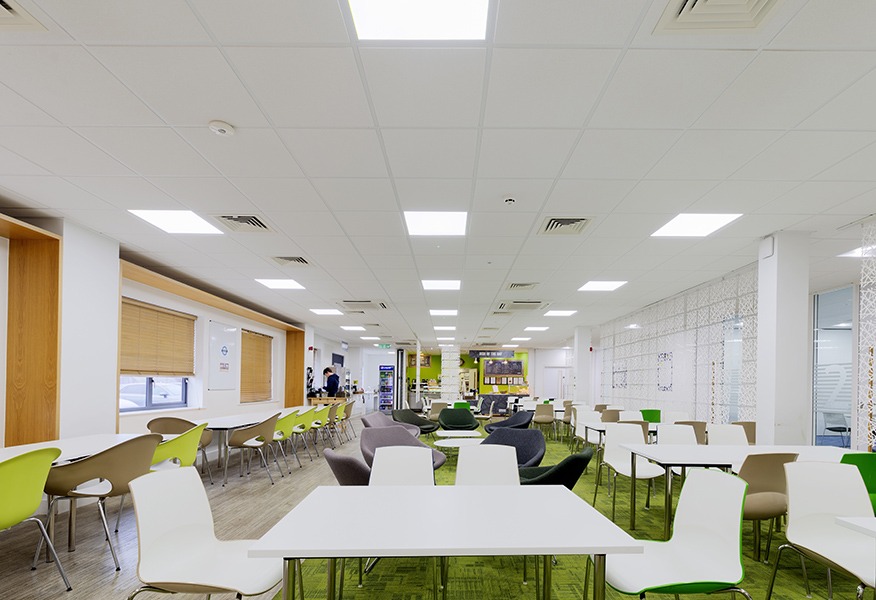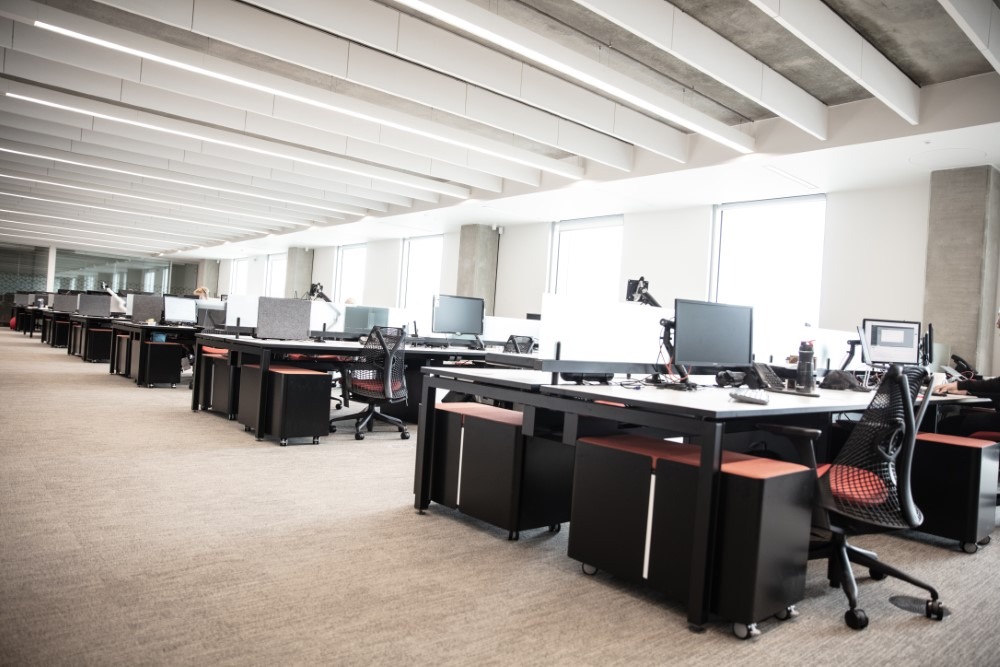
The Economic Benefits of Lighting for Wellbeing
The economic and energy-saving benefits of implementing next-generation technologies have long formed a compelling case for upgrade projects – but increasingly their contribution to improved workplace lighting for wellbeing is playing a critical role – and this presents an opportunity for electrical contractors, says Tamlite Lighting’s Head of Wellbeing, Debbie-Sue Farrell.
For technical service companies and the electrical supply chain, the contemporary case for the implementation of major new building systems – such as those responsible for lighting, heating and air-conditioning – has been well-established for some time now.
Overwhelmingly, it has focused on the very marked benefits that next-generation systems can bring in terms of reducing energy expenditure and lowering carbon footprints. And with customers now frequently able to benefit from relatively short Return on Investment (RoI) periods, as well as save greatly in the long-term from minimal maintenance and replacement costs, this case has proven to be compelling for companies of all shapes and sizes.
But while these elements are still very much part of the mix for both upgrades and new-build schemes, there is another factor that is both forming part of the core argument and facilitating further upselling as proposed schemes become more extensive and ambitious. That factor is office employee wellness.

For private companies – and, perhaps especially, public sector organisations – there is presently a very urgent imperative to take action. In the UK, the latest figures from the Health & Safety Executive (1) reveal that 26.8 million working days were lost due to work-related ill-health in 2017/18. On average, each person suffering took around 16.5 days off work, with stress, depression and anxiety accounting for the largest single share of cases. Moreover, the number of cases related to these factors rose by 13% on the previous year.
Combine such findings with those from recent overviews of workplace wellness and the situation becomes even more concerning. For example, the 2018 British Council for Offices report, entitled ‘Wellness Matters: Health and wellbeing in offices and what to do about it’ (2), revealed that less half of respondents felt their workplace was having a positive impact on their health, whilst 17% indicated that their working environment could actually be diminishing their personal wellbeing.
However, there is no cause to become too doom-laden as our recent conversations – both directly and via our channel partners – confirm that employers are now generally more aware of the wellness issue than they have ever been. Perhaps inevitably, levels of knowledge do vary substantially – sometimes, it must be said, even within the same organisation! – but crucially the underlying tone is one of improved awareness of the issue.
Commercial Opportunity
The long-established link between improved wellbeing and certain key building systems means that the latter now constitutes a prominent target of new investments. For installers, contractors and consultants, that is likely to translate to some very exciting and lucrative opportunities over the next few years.
When thinking about wellness and the value it can bring to a project, highlighting the potential benefit to all employees over the long-term, derived from consistent, high quality illumination in terms of concentration levels and productivity, is much more likely to expand a proposed scheme to focus lighting requirements by departments and activity types. By this logic a one-phase project can easily become a multi-phase scheme that eventually covers all areas of a facility.

Lighting’s Leading Role
It helps that lighting for wellbeing – and in particular the latest LED-based systems – can now be fairly swiftly conveyed. The ability of LED lighting to deliver a more appealing and consistent standard of illumination is nothing new, but the last few years have witnessed a dramatic growth in the number of tunable systems that make it possible to closely match circadian rhythms – in other words, the 24-hour cycle that synchronises bodily functions in humans and animals.
Here, electrical contractors may wish to allude to recent comments by the WELL Building Institute, whose WELL v2 standard continues to rise in profile globally – to the extent that it is now widely regarded as the international benchmark for green construction. Highlighting the importance of circadian lighting, the Institute observes on its website that “the explosion of tunable LED lighting systems on the market in the last five years has made it easier than ever” to achieve these requirements (3).
With WELL Building Institute certification increasingly coming to be seen as hugely beneficial kudos for major companies, in particular, it certainly won’t do any harm to improve your understanding of the basic principles of circadian lighting design. The Institute’s website contains a wealth of information in this regard, including its own ‘must haves’ for effective deployment, such as the requirement for electric lights to provide maintained illuminance on the vertical plane facing forward of 150 Equivalent Melanopic Lux or greater (4).
The Wellness Revolution
From a societal point of view, the idea of nurturing wellness in the workplace is not particularly new. Employees who are comfortable, warm – but not too warm – and are sufficiently illuminated are bound to be more productive. But what is new is that the technologies to help bring about these improvements are no longer the preserve of larger companies, with SMEs able to benefit from increasingly cost-effective packages.
If anything, the current unpredictable economic outlook means that lighting for wellbeing – and its implications for productivity – is sure to receive even more attention in the future. System suppliers, contractors and consultants who both understand this, and who are able to integrate it effectively into their proposals and programmes of work, will be well-positioned to benefit from the new phase of projects that is sure to follow.